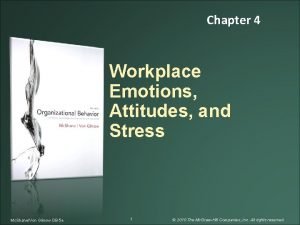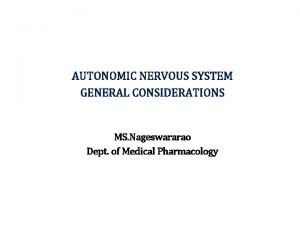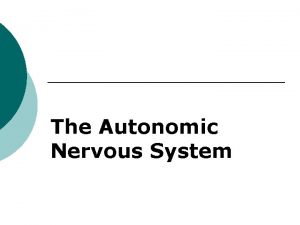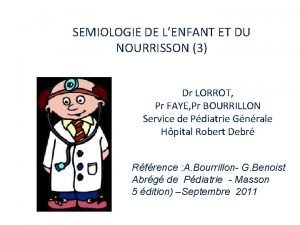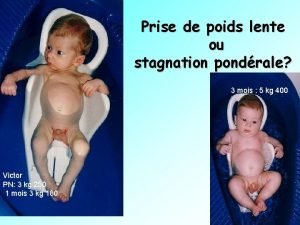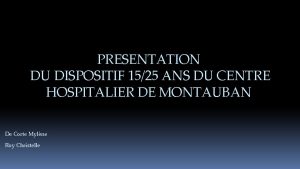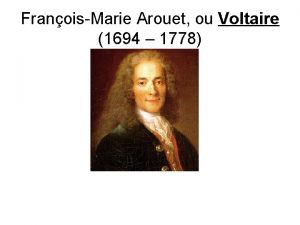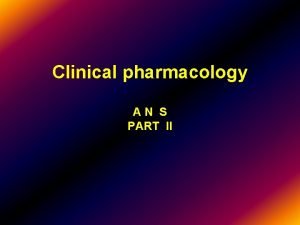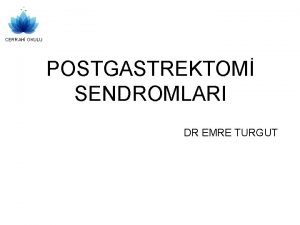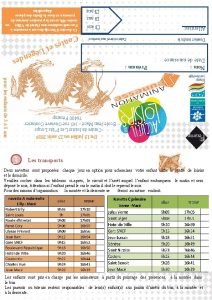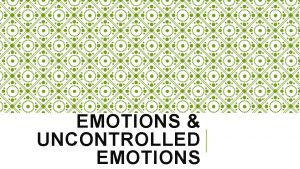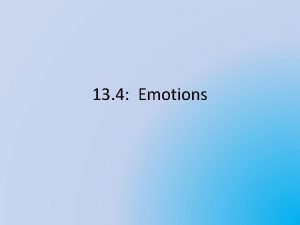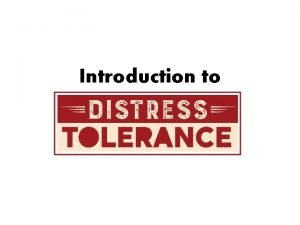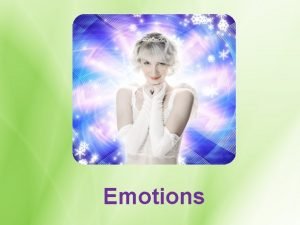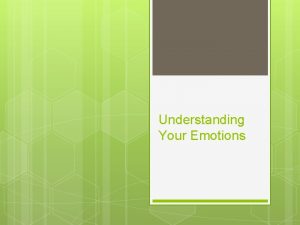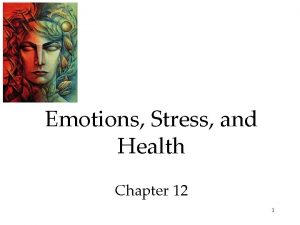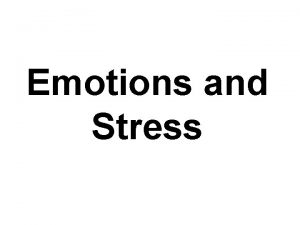Emotions and Stress 2 EMOTIONS and the ANS















- Slides: 15

Emotions and Stress 2


�EMOTIONS and the ANS The role of the ANS in emotion focused in two issues: The degree to which specific patterns of ANS activity are associated with specific emotions The effectiveness of the ANS measures in polygraphy �EMOTIONAL SPECIFICITY OF THE ANS James-lange theory -says that different emotional stimuli induce different patterns of ANS activity and that these different patterns produce different emotional experiences.

�Cannon-Bard theory -claims that all emotional stimuli produce the some general pattern of sympathetic activation.



�POLYGRAPHY A method of interrogation that employs ANS indexes of emotion to infer the truthfulness of the subject’s responses. �+control-question technique -usual interrogation method in which the physiological response to the target questions is compared with the physiological responses to control questions whose answers are known. �+guilty-knowledge technique -use this technique; the polygrapher must have a piece of information concerning the crime that would be known only to the guilty person.

�EMOTIONS AND FACIAL EXPRESSION Ekman and his colleagues study of facial expression � 1960’s they began by analyzing hundreds of films and photographs of people experiencing various real emotions. � 1975(Ekman&Friesen) atlas facial expression that are normally associated with different emotions are compiled. �The atlas of the facial expression are photographs of models who were instructed to contract specific facial muscles on the basis analysis.

�+Primary Facial Expressions �Six Primary emotions (Ekman&Friesen) Surprise Anger Sadness Disgust Fear Happiness


Concluded that all other facial expressions of genuine emotion are composed of predictable mixtures of the primaries. �UNIVERSALITY OF FACIAL EXPRESSION Darwin’s assertion that human facial expressions are characteristics of the species was widely believed that facial expression are learned and culturally variable. Darwin’s new of the universality official expression, they do not den the possibility of subtle cultural differences.

�FACIAL FEEDBACK HYPOTHESIS Hypothesis that our facial expressions influence our emotional experience. �VOLUNTARY CONROL OF FACIAL EXPRESSION Exert voluntary control over facial muscles; it is possible to inhibit true facial expressions and to substitute false ones. Two ways of distinguishing true expressions from false ones: 1. Micro expressions (brief facial expressions) of the real emotion often break through the false one. 2. There are often subtle differences between genuine facial expressions and false ones that can be detected by skilled observers.

� Duchene in 1862 (differences between genuine & a false facial expression) =said that the smile of enjoyment could be distinguished from deliberately produced smiles by consideration of the two facial muscles that are contracted during genuine smile; orbicularis oculi and zygomaticus major. � Facial EXPRESSIONS: CURRENT PERSPECTIVES Ekman work on facial expression as a result it is now clear that Ekman’s Six Primary Facial Expressions of emotions rarely occur in pure form -they are ideals with many subtle variations. -existences of other primaries has been recognized. -emotional valence refers to the general positive/negative character of an emotion. -imbalance has led to the view that all positive emotions may share the same facial expression.

�TRACY&ROBIN’S -expression of pride is readily identified by individuals of various cultures, cannot be created from a mixture of other primary expressions & involves postural as well as facial components.

THANK YOU!!!!! �Prepared by: �Celso, Rhea Abegail T.
 Workplace emotions, attitudes, and stress
Workplace emotions, attitudes, and stress Workplace emotions, attitudes, and stress
Workplace emotions, attitudes, and stress Engineering vs true stress strain curve
Engineering vs true stress strain curve Chapter 10 stress responses and stress management
Chapter 10 stress responses and stress management Normal stress definition
Normal stress definition Ans and cns difference
Ans and cns difference Ans hypothalamus
Ans hypothalamus Int ans
Int ans Radio age osseux
Radio age osseux Courbe de croissance garçon
Courbe de croissance garçon Dispositif 15 25 ans montauban
Dispositif 15 25 ans montauban La guerre de sept ans
La guerre de sept ans Candide ou l optimisme
Candide ou l optimisme Impulsion 12+
Impulsion 12+ Dusptaline
Dusptaline Pilorun
Pilorun
